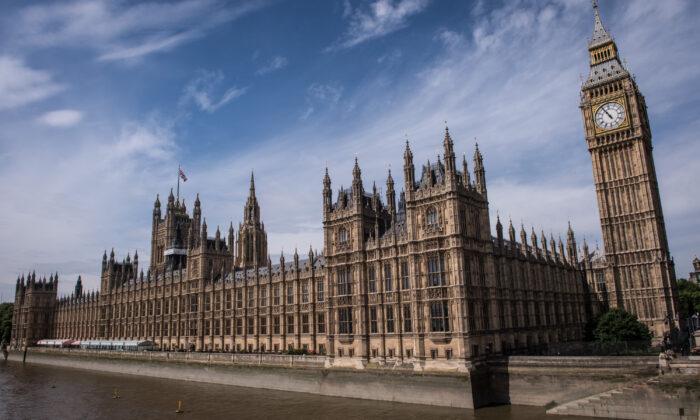The Palace of Westminster is in critical need of repair works, which have been stalled for years owing to “years of procrastination” and the inability to determine how the work will be undertaken, said a government committee.
In 2020 the committee said the Parliament building needed restoration and that its maintenance approach was unsustainable. Delays in works are costly to the taxpayer and dangerous for the health and safety of Parliament staff and visitors, it said.
In 2023, the committee heard that the building’s heating, ventilation, drainage, and electrical systems were out of date and needed replacing.
The latest report warned of “the real risk that the whole building will be destroyed by a catastrophic incident before the work is done, or perhaps even begun.”
“After years of procrastination and debate, resolutions of the House overturned and the exploding costs we saw in restoring just the Elizabeth Tower, it is difficult to have confidence in the future of the project to repair and restore this iconic world heritage site that thousands of people work in and visit every day,” said committee Chair Dame Meg Hillier in a statement.
The health and safety risks posed by the current condition of the Palace of Westminster include exposure to asbestos, leaks, dropping masonry, and constant risk of fire.
Since 2016, said the report, there have been 44 fire incidents across the parliamentary estate and eight asbestos incidents. Asbestos could perhaps be found at 2,500 sites, including within inaccessible areas such as pipe lagging, ducts, and voids, the committee heard.
‘Tough Sell’
In January, the clerk of the House of Commons and clerk of the Parliaments took joint accountability for restoring and renewing the Palace. The clerks are supported by members of the Houses’ Commissions and an R&R client team of architects, engineers, project managers, and contractors.According to the PAC, the clerks of both Houses “finally seem to acknowledge publicly the enormity of this task, for which they are now personally accountable.” However, the committee added that it was still unclear how the clerks will manage their legal responsibilities to the Palace restoration programme and the building’s staff and visitors.
The R&R client team is expected to present the restoration plans to the government before the end of 2023, followed by a business case for their approval in 2024 or 2025, depending on the next general election.
Meanwhile, the Palace may not be preservable should a catastrophic event occur, said the lawmakers, adding that the clerks don’t know how long the Palace will remain standing without critical work taking place.
The restoration and renewal of the Palace would be a “hard sell” to the public, according to the clerk of the House of Commons, given the cost of works.
Previous estimations showed that the cost would be between £7 billion to £13 billion if the Palace was empty, and works would take between 19 and 28 years.
If the building remains in use, the cost would spiral to £22 billion and works could take up to 76 years.
To date, £270 million has been spent on developing schemes and the business case prior to 2022.
The PAC said it remains aware of the risk for the costs to increase as the renovation progresses through various stages.
In 2020, the National Audit Office reported how in refurbishing the Elizabeth Tower, more commonly known as Big Ben, the initial cost forecast was £29 million. However, in February 2022, the clerks confirmed that the final estimated cost was £86 million.





